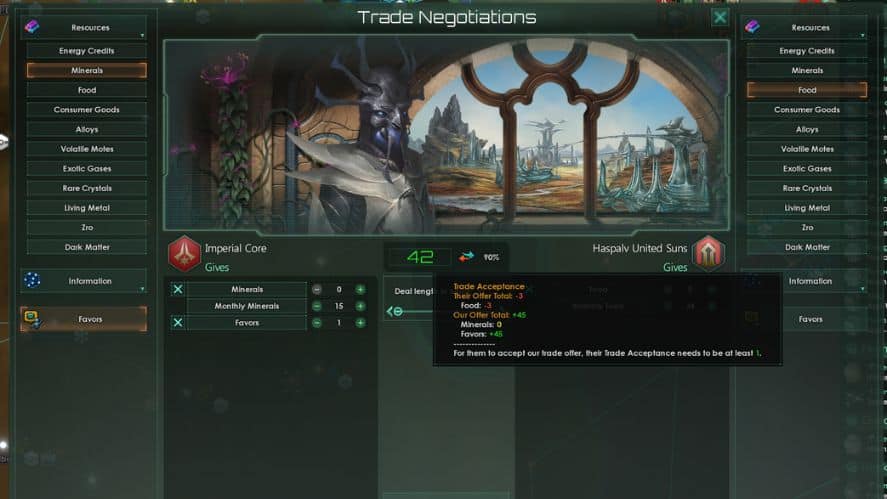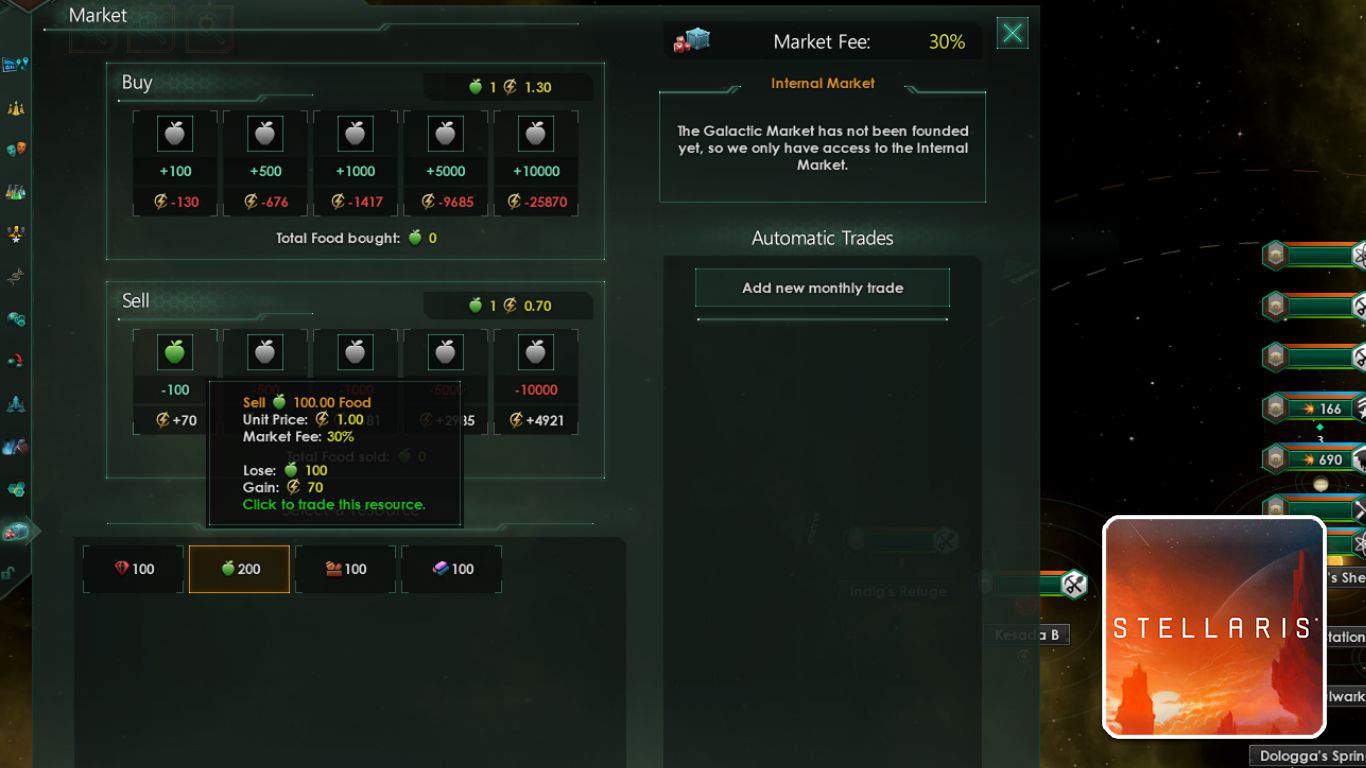One of the pillars of a strong empire is trade. The best Stellaris players know how trade works and what it does for their economy.
There are three forms of trade in Stellaris. There are trade value, market trading, and diplomatic trade deals. These methods are very different from one another, and some new players may find this confusing.
Recommended Read: How to Increase Stability in Stellaris
Simply put, these three methods could be referred to as passive (trade value), active (diplomatic trades), and indirect (market) trading. This guide will explain all you need to know about how trading works in Stellaris.
Trade comes in three forms in Stellaris. Trade value is a source of passive income for your economy and represents your empire’s internal trade. Diplomatic trades are active trade agreements between two empires. A lot can be traded using diplomatic trades, from resources to diplomatic favors. The market is a place to buy any resources for energy credits, and the price fluctuates based on galactic demand.
Table of Contents
How Does Trade Work in Stellaris?
I wouldn’t blame you for thinking the trading system is a little boring.
Even the “active” trades take place off-screen, and there are no moment-to-moment gameplay features that occur as a result of trading.
There are no special trade ships to protect or trade routes to optimize. The developers may have plans to change this, but as of right now, trading is a low-player interaction part of the game.
Low interaction does not mean low impact. Trading is a wonderful way to supplement your economy and to make friends with other empires.
Trading comes in three varieties: trade value, market trading, and diplomatic trade deals. These are very different forms of trade, and this guide will walk you through how they all work.
Trade Value
I have already produced a full in-depth guide on trade value here on Gamer Empire. This section will cover the basics only.
Trade value is your empire’s internal trading system. Think of it as the exchange of goods and services. The higher your trade value, the more your pops can spend on products. The more pops can spend, the greater income trade value generates.
The higher your trading value, the more profitable it is for your empire. By default, trade value converts on a 1 to 1 basis for energy credits.
So if you have a planet that has 100 trade value, it will produce 100 energy credits for your empire.
Empires can gain access to different trade policies. Allowing their trade value to produce consumer goods or unity.
Extra trade value is never a bad thing, and you should take every opportunity you can get to improve it.
The Market
The market is a strange beast. Even if your empire hasn’t met any aliens yet, you can buy and sell on the market.
The market is a source of endless resources every empire has access to. Empires exchange energy credits for both primary and secondary resources.
The price of these resources will go up or down depending on supply and demand.
If you buy a lot of alloys to produce a fleet for war, the price of alloys will skyrocket. Conversely, if you are lousy with food and sell all of it to the market, its value will plummet.
The market is a great way to purge excess resources and to obtain the extra stuff you need for your current projects faster.
There are two ways to trade on the market. You can either carry out a one-off transaction, affecting the market value straight away. Or you can set up monthly trades for resources, where the value will drift over time.
Later in the game, the galactic community may choose to form the galactic market. Giving one empire the chance to become the home base of the market and receive some nice discounts.
Another benefit to the formation of the galactic market is that both slaves and strategic resources will now be available for purchase.
Diplomatic Trade Deals
Trade deals are the most interactive part of trade in Stellaris. They are diplomatic agreements between two empires and can help you in a multitude of ways.
The most common trades between empires are for resources. And, if used properly, can be much more lucrative than trading on the market.

Like market trading, resource trades between empires can be one-off things or monthly deals that last between 10 and 30 years.
Resources are not the only trading capital empires can use. Diplomatic favors, communication intel, sensor link, and even entire systems are on the menu for trade.
Other empires will only accept trades that are in their interests and will not trade with empires that they have a negative opinion with.
Trade deals are an opportunity to give gifts to other empires. This will improve your relationship with them.
Whether an empire will accept a trade deal will depend on the trade acceptance score. If the score is less than one, they will never accept the trade. You will need to sweeten the deal for them.
If the score is at one, they will accept the deal. For every point above one, you will receive a bonus in opinion. The other empire appreciates your generosity in the deal.
On the trade screen, you can see a detailed breakdown of how the trade acceptance score was calculated by highlighting it.
Subject empires have special trade options they can ask their overlord for. They can ask to transfer leaders, give extra loyalty, share data, and borrow fleets from their master.
Trading is not as exciting as defeating galactic threats, building megastructures, or making yourself emperor of the galaxy.
What trading is, is a vital component to achieving those late-game goals I just mentioned.
Taking the time to learn the trading mechanics is time well spent. You will be a better Stellaris player at the end of it.
This is everything you need to know about the different forms of trade in Stellaris.
If you have any questions or suggestions about this guide, please let us know in the comments section below. As always, have fun making trades in Stellaris.




